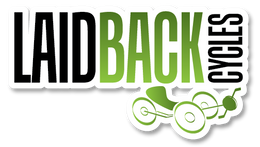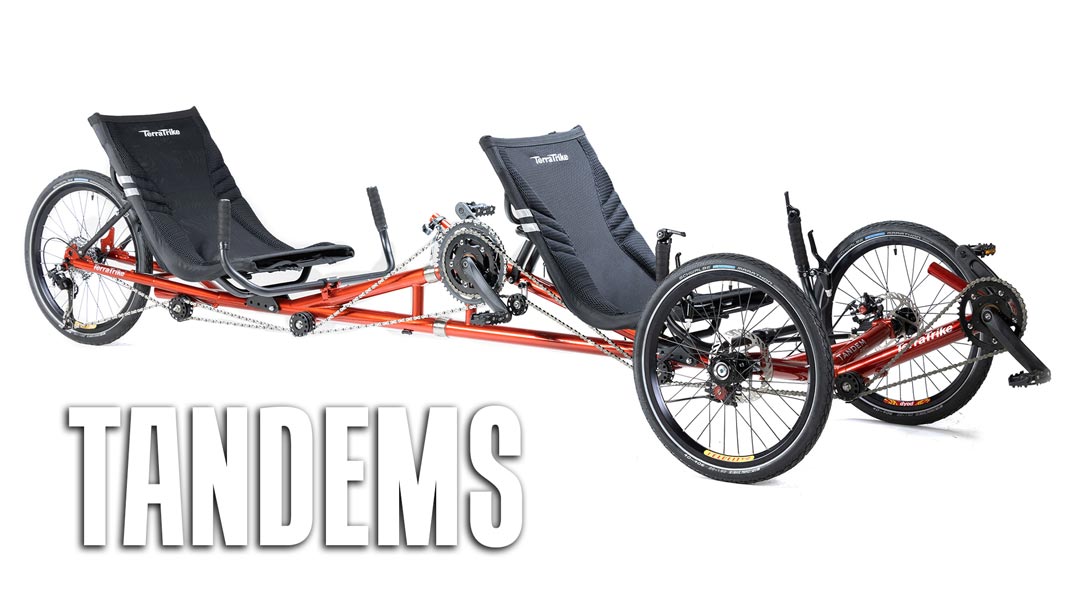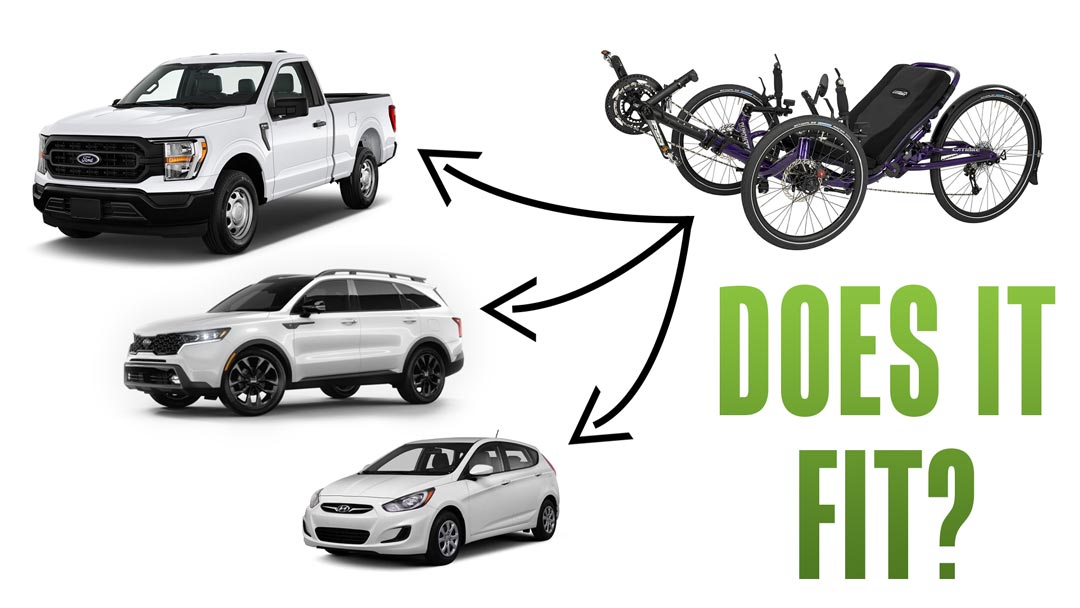Recumbent Trike Suspension
Suspension on recumbent trikes creates comfort and traction for your ride. It helps keep your ride smooth when you encounter bumps in the road and becomes more important if you tend to ride on rough terrain. Although it might seem it is only required when heading out on bumpy, sloped trails, it really is something to consider even if you tend to keep to paved paths or roadways. Remember, you can encounter potholes, uneven terrain, and other obstacles no matter where you ride. Here we look at recumbent trike suspension, how it works, and why it is something to consider when choosing your trike.
Types of Recumbent Trike Suspension
As mentioned, suspension is directly related to the types of surfaces you’ll ride on. Even the most comfortable seat won’t do much to keep you comfortable when you encounter rough terrain or bumps. There are two types of suspension on adult tricycles:
1. Rear Suspension Only: As the name implies, rear suspension only has the suspension focused on the rear of the trike. Rear suspension trikes flex when you need to smooth out your ride. Many riders feel the rear is the place to be for suspension as this is where you tend to feel the bumps the hardest. Trike manufacturers offer rear suspension only as opposed to full suspension so there are options on price when full suspension isn’t necessary.
2. Full Suspension: The addition of front suspension offers one major benefit to riders which is that it makes you feel safer maintaining speed. The thing with front suspension is, unless your hit something like railroad tracks where you are hitting pretty much the same unevenness by both front tires at the same time, your front wheels will be hitting unlevel terrain individually. This means it doesn’t do as much for bumps in the path as you might expect. For most riders, full suspension isn’t necessary. However, it lets trikes lean or roll through turns to the outside, so again if you like to go fast, you’ll feel you have more control both on rough terrain or when going up and down slopes.
Which Suspension is Right for Your Trike?
How do you know what suspension is right for your trike? Here are the advantages of both types to help you decide:
Full Suspension Recumbent Trikes

Budget Isn’t As Much of a Concern: If money is no object, full suspension is more within your reach. They tend to cost much more, especially when compared to a standard trike. If you have the budget, most will say this is the ultimate ride, especially if you’re riding faster, on rougher terrain.
You’re All About Technical Trails: If you aren’t out there moseying along on basic, paved trails in local parks but instead are hitting heavy-duty technical trails, then full suspension is your best friend. Those challenging, rocky trails with plenty of tree roots or sudden slopes cry for full suspension. That’s actually why they build full suspension. You get both front and rear support, so you have improved traction, a smoother ride and improved control and handling when you hit the rough stuff. You can feel more confident on the trails with full suspension so enjoy your ride a lot more.
You Need More Comfort: You can definitely improve comfort with a good seat or seat accessories. But really, when it comes to comfort, your full suspension trike is designed to absorb those jarring bumps. If your body can only take limited exertion, or you tend to travel for longer, rougher rides, full suspension is not only more comfortable but can also reduce fatigue. As a result, you can travel farther and faster if that is the kind of trip you love.
You’re a Speed Junky: If you love the exhilaration of going fast, you want to avoid those jarring bumps that can leave you feeling a little worse for wear at the end of what should be a thoroughly exciting, fun ride. Front and rear suspension absorb those bumps when you are going fast. This is something rear suspension alone won’t do for you on seriously technical trails.
Good options for full suspension trikes include Catrike Dumont, Catrike eCAT Dumont, and some ICE trike models.
Rear Suspension Recumbent Trikes

Budget is a Concern: On the flipside of the budget scale, if money is a concern, then as mentioned above, you’re going to be facing higher costs for a full suspension bike. The rear suspension is a better option as they are easier to manufacture with fewer moving parts to worry about. In fact, you should consider maintenance costs for full suspension as it does add up over time. With rear suspension, you’ll enjoy a smoother ride, but without the higher price tag.
You’re More About Leisurely Rides: If you love a leisurely ride on paved, smoother trails, then you really don’t need that additional suspension. The rear suspension trike is just right when you like smoother trails where you might like to go fast but can hit some bumps in the road. Or maybe you enjoy unpaved roads in the country that do have some bumps that you tend to feel mostly at the back of your trike. You can absorb those bumps without the need for front absorption with the rear suspension trike.
You Want a Low-maintenance Trike: Because you’ll have fewer parts to contend with than a full suspension trike, the rear suspension is a lot easier when it comes to maintenance. Keep in mind all trikes require some maintenance for improved safety and performance. But generally speaking, the fewer parts your trike has, the easier and less expensive maintenance becomes.
You Want a Lightweight Trike: Rear suspension bikes are lighter because, again, they have fewer parts. However, just remember it all depends on the trike design. If weight is important, but you have a higher budget and tend to ride on more challenging trails, check the weights between the rear and full suspension, so you don’t miss out on the opportunity to own the ideal trike for your needs.
Good options for rear suspension trikes include the Greenspeed GT20 RS and some ICE trike models.




